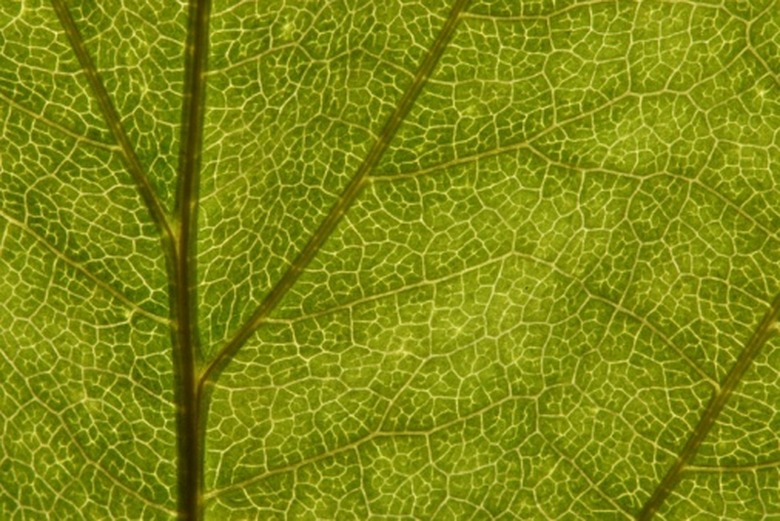What Advantages Do Cell Walls Provide Plant Cells That Contact Fresh Water?
Plant cells are similar to animal cells in both internal function and processes. Both cells contain mitochondria and ribosomes to help process energy and nutrients. However, plant cells have an extra feature that animal cells do not have called the cell wall.
The cell wall serves several unique purposes for a plant cell, including the plant cell's interaction with water. The cell wall changes how osmosis in animal cells and plant cells works.
In this post, we're going to describe the functions of the cell membrane and cell wall in plants and how that gives plants a benefit when it comes to osmosis in plant cells and other water-related functions.
The Plant Cell Wall
The Plant Cell Wall
In order to describe the functions of the cell membrane and cell wall, we need to define what the cell wall is.
Plant cell walls are rigid membranes on the outermost part of the cell. The cell wall provides a structured shape for the cell, helping the cell retain its form and shape. The cell wall also controls the rate of replication, allowing plant cells to replicate at a much slower rate than animal cells.
The cell wall helps to form the plant cell, but it also helps keep much of the internal functions of the cell, such as processing water, inside the plant. It can also provide structure and stability to the plant overall, allowing it to stand upright and rigid.
Protecting Important Nutrients
Protecting Important Nutrients
A cell wall allows water to work its way into the cell body. The cell wall can do this because the structure of the wall is porous. This allows water to pass into the cell without larger molecules and organisms like pathogens and bacteria entering into the cell. The walls can also process minerals, specifically minerals found in the dirt underneath the root that plants need to function.
Water helps flow these nutrients through the cell wall and into the internal mechanisms of the cell. At the same time, the water is unable to escape. The cell wall captures and pressurizes the water within the cell, keeping the cell properly hydrated.
Osmosis in Plant Cells: Crossing the Walls
Osmosis in Plant Cells: Crossing the Walls
A plant cell has three layers of walls: the lambella, the primary, and the secondary wall.
The middle lambella is a wall that connects plant cells with other plant cells with complex proteins. After the lambella is the primary wall, which is the rigid skeletal enclosure for the cell itself. Lastly, after the primary wall comes the secondary wall. This plant cell wall is a compressed wall that pressurizes the inside of the cell.
When water hits a plant cell wall, the water molecules pass through the more porous levels of the lambella and the primary wall. When water makes its way through to the secondary wall, it moves through the microscopic fibers of the secondary wall, but is then pressurized within the cell. This allows the plant cell to keep in the water it absorbs, making osmosis in plant cells unique.
Lipid Containment
Lipid Containment
Plant cells, like any cell, requires water, the plant cell's hard wall allows water to pass in and stay in within the cell. However, to describe the functions of the cell membrane and cell wall as only keeping water in would be incorrect since the plant cell wall also protects the rest of the cell from over-saturation.
Unlike an animal, a plant does not actively seek water; water comes to plants through perception, for example. Hence, a plant cell requires adequate protection from over-saturation of water, which is different than the osmosis in animal cells and bodies.
The cell wall of a plant cell, through the lambella and the primary wall, are made of compounds known as lipids, which are basically molecules of fats and waxes. The lipids can waterproof the cell from over-saturation, allowing a finite amount of water through to the secondary wall. This key for plant survival and something that osmosis in animal cells doesn't need.
Cite This Article
MLA
Fitzpatrick, Mark. "What Advantages Do Cell Walls Provide Plant Cells That Contact Fresh Water?" sciencing.com, https://www.sciencing.com/advantages-cells-contact-fresh-water-8600793/. 31 July 2019.
APA
Fitzpatrick, Mark. (2019, July 31). What Advantages Do Cell Walls Provide Plant Cells That Contact Fresh Water?. sciencing.com. Retrieved from https://www.sciencing.com/advantages-cells-contact-fresh-water-8600793/
Chicago
Fitzpatrick, Mark. What Advantages Do Cell Walls Provide Plant Cells That Contact Fresh Water? last modified March 24, 2022. https://www.sciencing.com/advantages-cells-contact-fresh-water-8600793/
